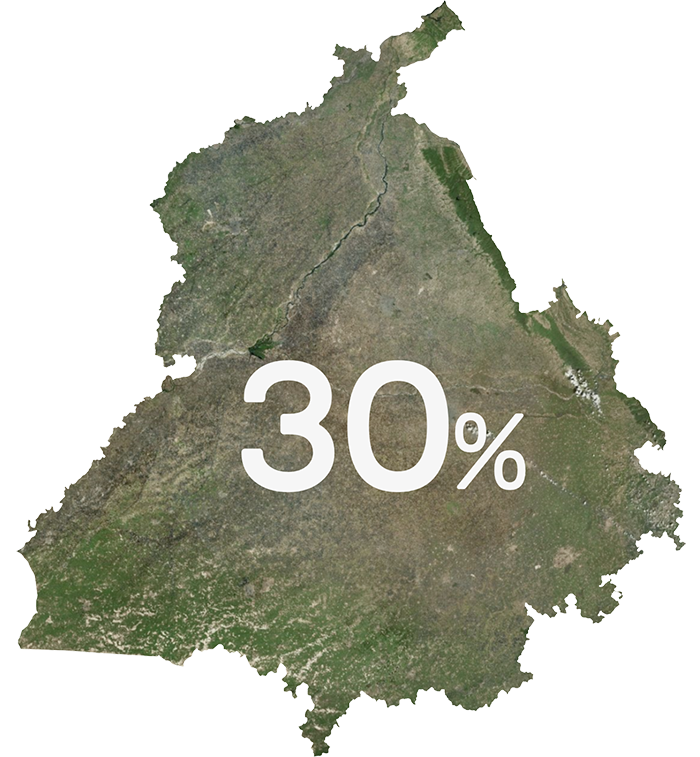Manual 10-222: Prototype Half Village
About 3 million years ago, humans learned how to use tools, and since then, we have perfected agriculture, built complex product lines, and created global shipping networks to make and exchange goods that form the cities we live in today. However, these cities are increasingly being challenged by the byproduct of this ever-growing production.
India, having recently surpassed China by population, is fast emerging as one of the biggest production hub in the world is now facing an imminent issue: Waste, and how to process it. Similar to many industries, India’s agricultural production supplies near 30% of global rice and wheat demand, and many of these two fundamental grains are grown and harvested along the northern grain belt of the counry.


The Indo-Gangetic Plains, spanning numerous regions, have historically been plagued with heavy air pollution as well - particularly in the harvest months of May and October; corresponding with the Rabi and Kharif agrcultural seasons that allow farmers to keep track of the most optimal climatic conditions for the two crops that are sown and harvested one after another, all within the same fields.



Having to follow a strict calendar, many of the waste produced after each crops’ harvest is collected in piles to be burned - causing acid rains and raising PM levels across some of India’s most crowded metropolitan areas such as Delhi and Mumbai.
Manual 10-222 is situated in a small agricultural community in India’s Punjab region, a state renowned as the country’s agricultural hub, particularly for rice and wheat production. The project directly addresses the critical issues of mass production and agricultural waste resulting from these practices, which are the primary contributors to heavy air pollution in many cities due to the burning of stubs and other leftover by-products.
![]()
![]()
Manual 10-222 tackles this multi-faceted issue through a public-private cooperative that repurposes agricultural waste into locally sourced and produced, lower carbon footprint building materials that replaces traditional ones (which contributes to 1/3rd of all carbon emissions in the country) in building the fast-expanding villages and cities of the country.
![]()
Agricultural communities are provided with a “bare bones” timber or lightweight steel structure and construction manual, which not only contains instructions as to how to construct the initial structure, but also material recipes to allow these communities to start repurposing their surplus and waste into construction materials (such as bricks, plates, strings, etc.), textiles, and other economically valuable assets.




By harnessing novel AI methods for analysis and generative techniques for discovering new material compositions and “recipes,” we aim to reutilize waste into various construction and production-related materials, ranging from bricks to textiles.
This approach not only prevents heavy carbon emissions and air pollution but also empowers these communities with more diverse forms of societal contribution and production - ultimately helping to build for the future productive communities of tomorrow within a sustainable and environmentally-friendly construction system.
Punjab Province, India
In collaboration with Jingwei Wu.
